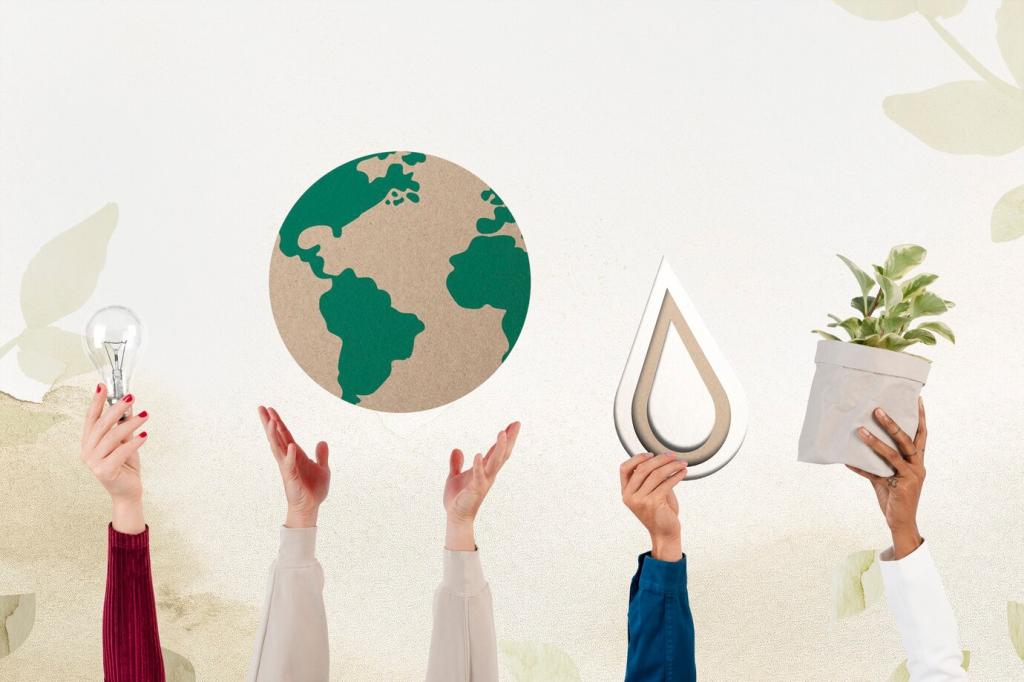
The Future of Green Packaging Technologies
The future of green packaging technologies represents a critical juncture for industries, consumers, and the environment. As sustainability emerges as a central concern, advancements in packaging are not only a response to regulatory pressures but also to shifting consumer preferences and global efforts to reduce environmental footprints. With an increasing emphasis on renewable resources, biodegradability, and innovative production methods, green packaging is set to transform how goods are protected, transported, and presented—reshaping markets and supply chains for years to come.
Innovations in Sustainable Materials
Plant-Based Packaging Solutions
The development of packaging from plant-based sources is revolutionizing the materials landscape. Solutions like corn starch plastics, mushroom packaging, and seaweed films offer a renewable alternative to petrochemical-based plastics, significantly reducing carbon footprints. These materials decompose naturally and quickly, preventing pollution and landfill buildup. Companies are investing heavily in refining these materials to achieve durability and usability comparable to traditional options. This transition not only lowers environmental impact but also aligns brands with the values of environmentally conscious consumers, driving both ecological and economic benefits.
Advancements in Recycled Content
Another major breakthrough in green packaging comes through maximizing the use of recycled content. Technologies enabling higher proportions of post-consumer or post-industrial waste in packaging help close the loop in material life cycles. Advanced sorting, cleaning, and processing techniques ensure recycled materials meet stringent quality and safety standards for direct food contact and other sensitive applications. As brands shift toward recycled content, the demand for high-quality recycled feedstocks rises, spurring greater investment in global recycling infrastructure and innovation in material recovery systems.
Edible and Dissolvable Packaging
Emerging packaging that can be eaten or dissolves completely in water offers an exciting vision for waste-free products. These solutions use safe, natural ingredients such as rice, potatoes, and seaweed, and are particularly suited for single-serve items, food wraps, or products consumed on-the-go. As they eliminate the need for disposal and don’t contribute to microplastic pollution, edible and dissolvable packaging appeal to brands aiming for zero-waste commitments. Despite challenges in preserving product shelf life and safety, rapid progress is being made toward scalable, commercially viable solutions.
Advanced Manufacturing Processes
Modern manufacturing is key to scaling green packaging efficiently. Processes like precision molding, low-impact extrusion, and additive manufacturing reduce energy and water consumption while minimizing waste. Digital technologies allow for greater customization—producing only what is needed, when it’s needed, thus limiting overproduction and resource waste. Additionally, automation and AI-driven quality control ensure consistent material integrity while lowering costs. These efficiencies make green packaging attractive not just for its environmental benefits, but also for its bottom-line advantages.
Smart and Interactive Packaging
Technology is making packaging more than just a protective layer; it is becoming interactive and intelligent. Smart packaging can monitor freshness, indicate spoilage, and provide traceability information using embedded sensors and chips. For green packaging, this means smarter resource use—products can last longer, waste is minimized, and the supply chain becomes more transparent. Consumers benefit from real-time data while companies harness valuable feedback to streamline logistics and further optimize resource deployment.
Life Cycle Assessment and Optimization Tools
Data-driven tools are increasingly vital for ensuring packaging truly delivers on its green promises. Life cycle assessment (LCA) platforms evaluate environmental impacts across every stage of a package’s life, from raw material extraction to disposal. By harnessing big data and AI, these tools allow companies to compare scenarios, identify improvements, and make informed choices that minimize ecological damage. Optimization reduces unnecessary material use, enables better recycling, and aligns packaging design with circular economy principles—making sustainability measurable and actionable.
Evolving Environmental Regulations
Governments worldwide are tightening regulations concerning packaging materials, waste management, and recycling quotas. Bans on single-use plastics, mandates for minimum recycled content, and extended producer responsibility schemes are compelling manufacturers to innovate or face fines and reputational risk. Regulatory certainty encourages long-term investment in green technologies while creating a level playing field. As more countries adopt ambitious targets, early adopters of green packaging gain a competitive edge, while laggards may struggle to adapt to rapidly shifting legal landscapes.
Growing Consumer Demand for Sustainability
Today’s consumers are more informed and values-driven than ever before, expecting brands to demonstrate a real commitment to sustainability. Packaging is a highly visible symbol of a brand’s environmental credentials, directly affecting purchasing decisions and brand loyalty. Shoppers increasingly scrutinize packaging’s recyclability, composability, and carbon footprint—rewarding companies that innovate and penalizing those that don’t. This growing demand catalyzes faster adoption of green packaging solutions, driving a market transformation that is as much consumer-led as it is top-down.
Corporate Sustainability Commitments
Many of the world’s largest brands have set ambitious sustainability goals, including targets for packaging materials, recycling rates, and greenhouse gas reductions. These corporate commitments act as powerful market drivers, influencing suppliers and competitors to follow suit. Through strategic partnerships, research investments, and new procurement standards, companies are fostering an ecosystem where green packaging thrives. Transparent reporting and accountability around sustainability metrics further ensure that these commitments translate into real-world impact, accelerating the mainstreaming of green packaging technologies.
Previous slide
Next slide
